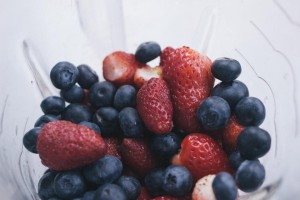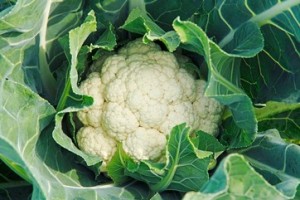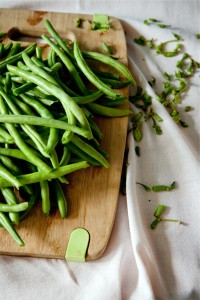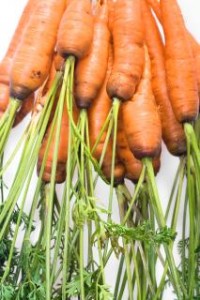
The color of food is extremely important. Food color gives us a variety of useful information before we taste or smell a food. We even learn to associate different colors with different food attributes:
• Red is associated with a sweet taste like strawberries.
• Yellow is associated with sour flavors as in lemons.
• A bright green may be associated with a tart taste like green apple.
• Dark colors are associated with spoiled food and signal us to not eat it because it may be unsafe.
Indeed, the flavor of a food can be influenced based on simply what color it is. For example, people given samples of jello that only differ in their color but not taste, say lemon jello colored red, green, and yellow will report that the red tastes like cherry or strawberry, the green like lime, and only the yellow like lemon. In reality, all of the samples have the same flavor.
For this reason, color has always been an important part of food products in the food industry. Added colors are used to enhance food and make it more desirable, to give consumers clues to the flavor of food, and to simply make food fun. Let’s take a look at the main categories of colorants the food industry uses:
Anthocyanins
Red, purple, or blue color pigments that can be found in the leaves, stems, roots, flowers, and fruits of a plant. Color and intensity of these compounds can be changed easily with pH, which allows for many color possibilities. Popular sources for anthocyanin compounds include grape skins and beet roots.
Anthoxanthins
White, colorless, off-white, or yellow pigments that occur in plants. Anthoxanthins are not used too often in food products as additives, but occur in many vegetables and fruits.
Chlorophylls
Bright to dull green color. You may know chlorophyll as the substance in plants (like moringa!) that allow them to absorb light for photosynthesis, but they also are responsible for making many plants green. Apart from vegetables, you probably won’t find chlorophyll as a colorant in many foods at the grocery store due to its instability.
Carotenoids
Orange or yellow pigments. Think beta-carotene or the orange color of carrots. Carotenoids are also not used too often in food products due to their sensitivity to oxidation, which can cause hue change.
When it comes to colorants, or any food additive really, consumers have preferred natural ones in recent years. What consumers may not know about products labeled “natural” is that no regulated definition for it exists. Other definitions like organic have specific definitions and regulations that go along with them that food manufacturers must follow in order to meet that definition. However, natural is hard to define and has only begun to matter to consumers. Natural also may have different definitions to different people. While the FDA and many other regulatory bodies around the world do not have a definition for natural, food companies or stores such as Whole Foods may set their own standards for what they consider to be natural and what they wish to include in their products.
To be clear, the FDA regulates all food colorants and additives. Colors are under one of two categories, certified and exempt from certification. Certified colors are colors that are produced synthetically, used widely, and less expensive. There are nine of these colors that are approved for use in the U.S.: blue 1, blue 2, green 3, red 3, red 40, yellow 5, yellow 6, citrus red 2, and orange B. Colors that are exempt from certification are those that are derived from natural sources like vegetables or minerals. They are typically more expensive, less stable, and often add unintended flavors to foods. Both groups of colorants are tested for safety and must be used according to certain guidelines and amounts.
The labeling of foods containing colorants can be confusing. To sum things up, remember these three guidelines:
- Natural colors do not exist when it comes to food, only colors that are derived from natural sources.
- A food that contains “artificial colors” in its ingredient label does not necessarily mean that the colors used are synthetic. Synthetic colors, like blue 3, must be listed in the ingredients list. “Artificial colors” only means that a color is added that is not native to the food it is added to. For example, beet root juice is used to give strawberry ice cream and yogurt its characteristic pink color and is considered artificial only because beets aren’t usually included in strawberry ice cream or yogurt recipe.
- When specifically looking for products that use colorants from natural sources, look for labels that say, “no artificial colors used” or “colors from natural ingredients/sources”.
Colors, no matter what source they come from, can make preparing and eating food fun and enjoyable. Colors tell us if foods are safe to eat and can even change our perception of flavor if they aren’t what we expect. Hopefully this information will shed a bit more light on the colors in your life!











